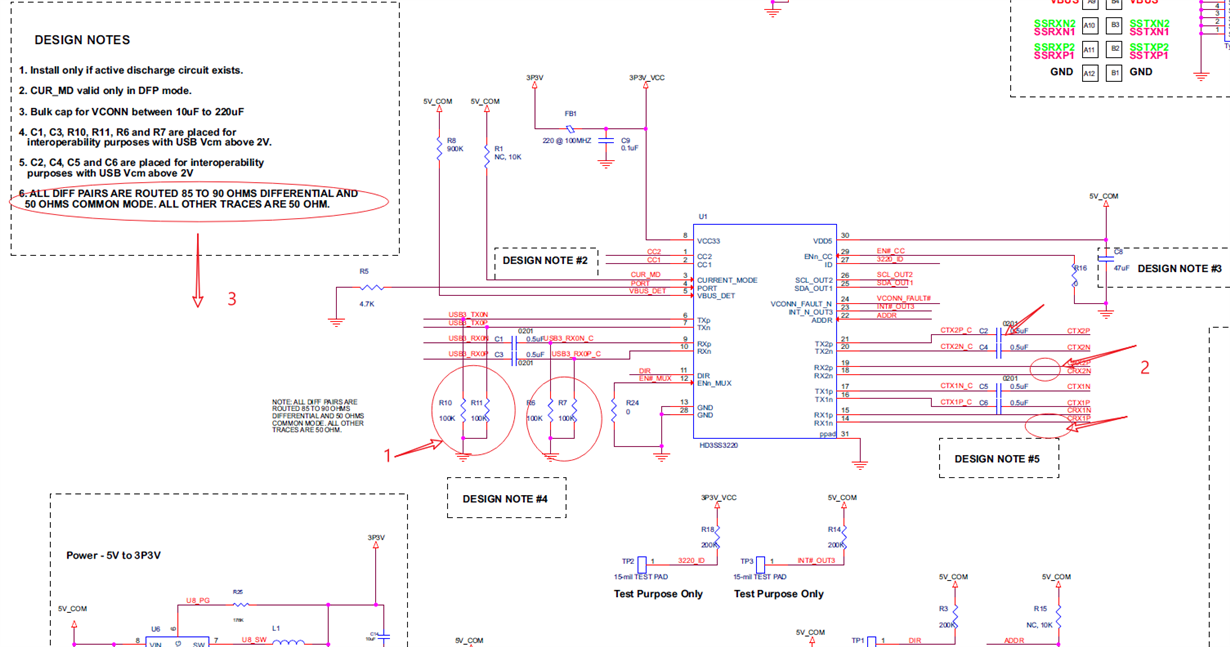Hi team,
My customer wants to use HD3SS3220 to develop a MIFI dongle.
Questions about the HDSSS3220 UFP EVM SCH are:
1. why we put R10, R11, R6, R7 resistor there, customer don't understand the design note#4.
2. there are AC coupled cap on CTX2P and CTX2N, why we don't put AC coupled cap on CRX2P, CRX2N?
3. design note#6 say that DIFF PARIS routed 85-90ohms, 50ohms common mode. Does it mean I need to connect a 50ohms res in each trace?
Shubiao



